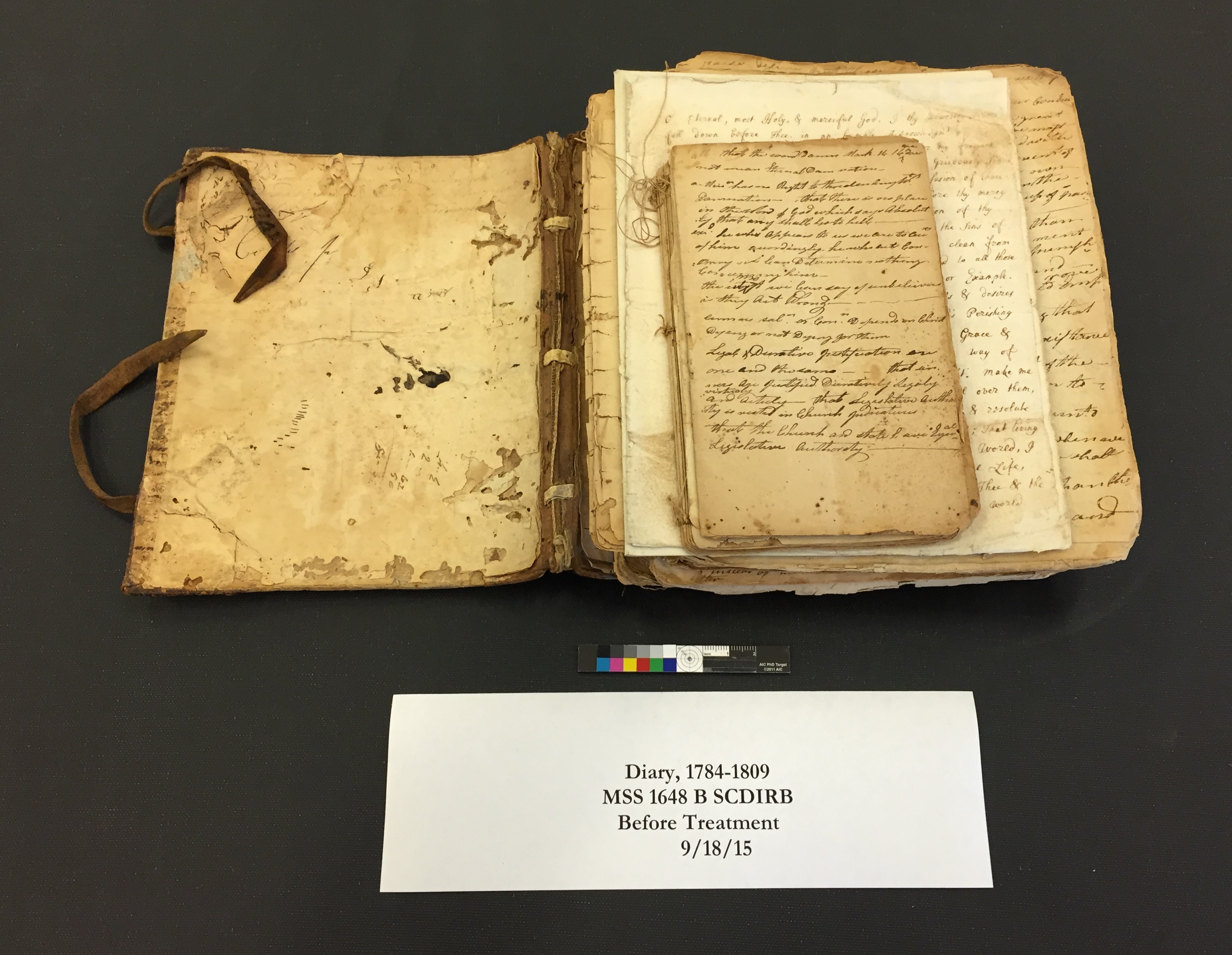Obsession is a tricky word. Any bibliophile can sense it coming, when they read a new dealer description or see that perfect binding. We’re using the word in our upcoming more »
Tag: manuscripts
This is a guest post by Charles Solomon, 7th grader at Forsythe Middle School (Ann Arbor, Mich.), who accompanied his father, Matthew Solomon, to DC for his March 3 lecture, Fantastic Voyages of the Cinematic Imagination at the National Museum of American History. The lecture was presented in tandem with our current exhibition, Fantastic Worlds: Science and Fiction, 1780-1910.
The conservation of manuscript pages can be very tricky. In the case of the McAuley Diary, from our Dibner Library of the History of Science and Technology, there were many issues. The manuscript consisted of multiple sized unbound sections housed together in a leather cover that was far too small for its contents. The pages were nearly all crumpled and torn and many pages had areas of loss. In this condition the text was not legible and attempts to turn pages could result in further damage from tearing. We proceed cautiously with hand written documents as many inks become unstable over time and are very sensitive to water.
On January 24, 1944, 19 year-old Joye Kelly sat down to take a psychology exam final at the Katharine Gibbs School in New York, NY. As she pondered the test’s questions, she had no idea her answers would forever change her life.
Galileo Galilei, one of the most famous and important scientists of all time, a man whose ideas survived Roman Inquisition and house arrest, is going up against Jackson Pollock, Langston Hughes and others to determine who is the “Most Seriously Amazing” at the Smithsonian. In this second annual contest, units from around the Smithsonian have picked their most remarkable objects and are asking the public to vote for the best of the Smithsonian.
The Smithsonian Libraries has been contributing manuscripts from our collections to the Smithsonian Transcription Center for digital volunteers (or Volunpeers) to transcribe for over a year now. We’ve featured a variety of materials, from a vocabulary of the Potawatomi language, to shipboard diaries, to natural history field books and aeronautical scrapbooks. These works have all been quickly and enthusiastically transcribed, and now we’re offering up a much more challenging item, sure to warm the heart of anyone who has an interest in medieval Latin: the De institutione arithmetica (On the principles of arithmetic) of Boethius, handwritten during the 15th century, from the collection of the Smithsonian Libraries’ Dibner Library of the History of Science and Technology, located in the National Museum of American History.
It’s National Handwriting Day! The Smithsonian Field Book Project, a joint initiative between the Smithsonian Libraries, Smithsonian Institution Archives, and National Museum of Natural History to uncover, catalog, digitize, and share online the primary source records of scientific research done at, by, and for the Institution, celebrates this day with a showcase of some of the handwriting samples encountered during the project work. The Project works with materials stretching back almost 200 years, to 1816, and therefore often runs across examples of both very good and very bad handwriting.


